We know that transport is the major requirement in the distribution industry to fulfill all the supply chain needs, from supplying raw materials to manufacturers to picking the order and delivering it to customers.
We are also aware of the carbon footprints like carbon dioxide, methane, and nitrogen oxide left behind by these transports that severely impact the environmental conditions.
That’s why sustainable supply chain is a necessity in logistics to protect the environment from greenhouse gas emissions leading to air pollution.
Green logistics adopts and incorporates sustainable transportation and delivery methods in the supply chain to protect the environment from pollution, waste, and excessive resource use.
Let’s dive deeper into this blog to understand green logistics in detail.
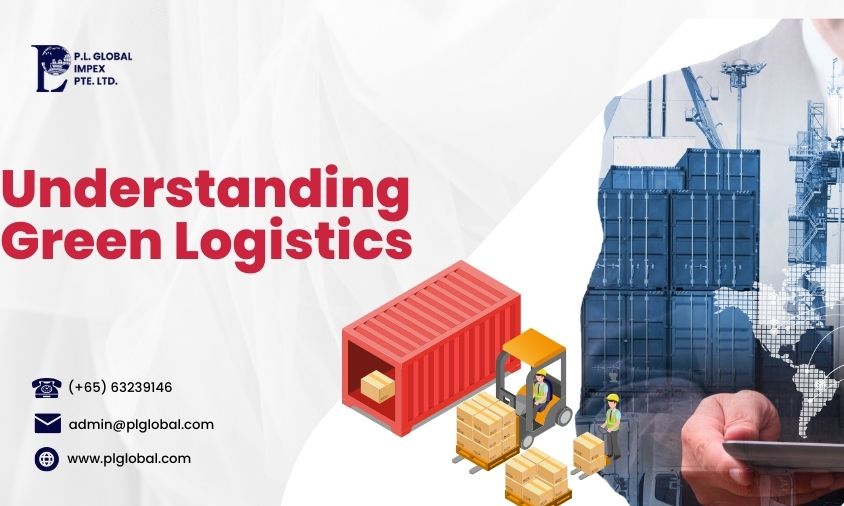
Understanding Green Logistics
As per C.J. Wiegmann and P. P. J. Wubben, “Green logistics is defined as the practice of managing logistics and transportation processes with the aim of reducing their negative environmental effects. This involves implementing eco-friendly practices such as optimizing delivery routes, using alternative fuels, and adopting sustainable packaging solutions. The core objective of green logistics is to balance economic efficiency with ecological responsibility, striving to lessen the impact on the environment while maintaining effective and efficient supply chain operations.”
In simple words, sustainable transportation is a process of implementing eco-friendly practices in the supply chain that includes optimizing energy use, employing low-emission vehicles, and utilizing sustainable packaging materials to protect the environment from further damage.
This strategy of adopting green logistics helps businesses to increase their brand value without compromising customer satisfaction.
Key Principles of Green Logistics: Sustainable Supply Chain
- The first principle of green logistics is that it focuses on using available resources efficiently to minimize waste and energy consumption.
- One of its core principles is to lower carbon emissions associated with logistics activities by adopting alternative fuels, energy-efficient transportation modes, and improved route planning to reduce fuel consumption.
- The next principle is to enhance energy efficiency in the warehouses and distribution centers by using energy-efficient technologies and optimizing heating and cooling systems.
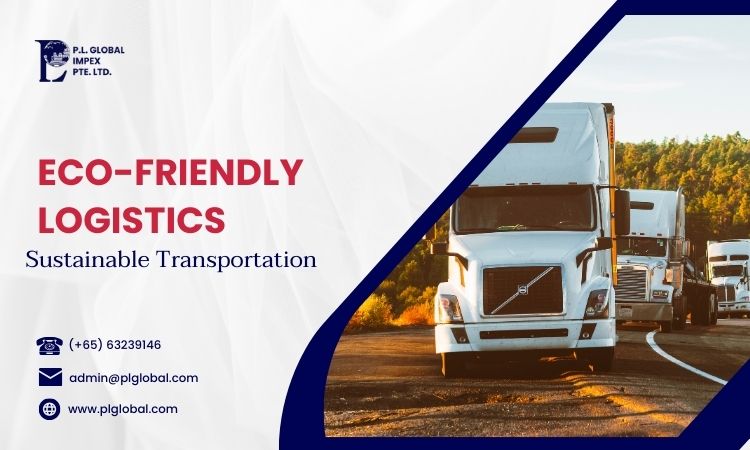
Benefits of adopting eco-friendly practices:
Environmental Preservation:
Businesses adopting eco-friendly practices are helping to preserve natural resources and reduce environmental degradation, which then contributes to cleaner air, water, and soil.
Cost Savings:
Businesses implementing sustainable practices in their supply chains can easily lower their production costs and boost financial stability by reducing their dependence on natural resources.
Enhanced Brand Reputation:
As consumers are increasingly becoming conscious of the products they use and their impact on the environment, businesses committing to sustainable practices can easily build their brand reputation and consumer trust.
How Can Transportation Be Made More Sustainable?
Now you know the importance of sustainable transportation, so now you might be thinking about how you can make your business transportation more sustainable. Below is the answer.
Use of Fuel-Efficient Vehicles:
Modern fuel-efficient vehicles are designed to consume less fuel while delivering the same level of performance. This reduction in fuel consumption directly leads to fewer greenhouse gas emissions and less air pollution. By adopting these vehicles, the transportation sector can significantly lower its carbon footprint and contribute to environmental sustainability.
Implementing Electric and Hybrid Transportation:
Electric vehicles (EVs) run entirely on electricity, eliminating tailpipe emissions and reducing dependence on fossil fuels. Hybrid vehicles combine traditional internal combustion engines with electric power, offering improved fuel efficiency and lower emissions compared to conventional vehicles. The integration of EVs and hybrids into fleets helps decrease overall emissions, reduce noise pollution, and support the transition to renewable energy sources.
Optimizing Delivery Routes to Reduce Emissions:
Efficient route optimization is key to reducing emissions in transportation. By employing advanced routing software and data analytics, companies can plan the most efficient delivery routes, minimizing travel distance and avoiding congested areas. This not only cuts fuel consumption but also reduces the time vehicles spend on the road, leading to lower emissions and operational costs.
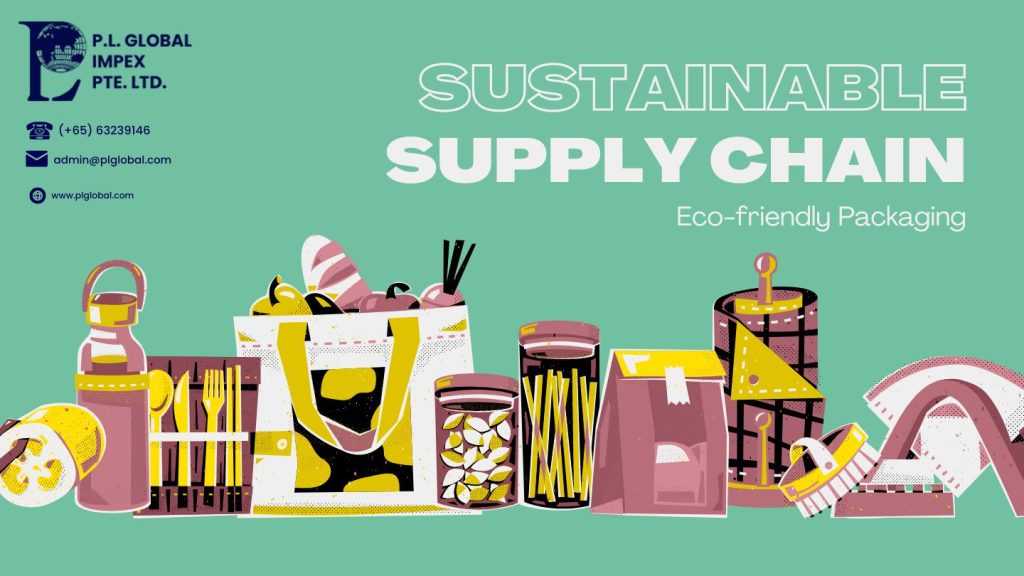
Eco-Friendly Packaging Solutions Reducing Packaging Waste:
Companies can minimize waste by adopting strategies such as reducing the size of packaging, eliminating unnecessary layers, and designing for optimal space utilization. This approach not only lessens the environmental impact but also reduces overall packaging costs.
Using Biodegradable and Recyclable Materials:
Biodegradable materials, such as plant-based plastics and paper, decompose naturally over time, reducing their impact on landfills and the environment. Recyclable materials, like certain types of plastic, glass, and metals, can be processed and reused in new products, thus conserving resources and minimizing waste. By choosing materials that are either biodegradable or recyclable, companies can contribute to a circular economy and decrease their environmental footprint.
Innovations in Sustainable Packaging:
Innovations in sustainable packaging are driving the transition to more eco-friendly solutions. Advances include the development of compostable packaging made from organic materials, such as cornstarch or seaweed, and smart packaging technologies that reduce waste and enhance recycling. Companies can enhance their sustainability efforts by integrating these cutting-edge technologies and materials and meeting the growing consumer demand for environmentally responsible packaging solutions.
Efficient Warehousing Practices
Energy-Efficient Warehouse Design:
Designing energy-efficient warehouses cuts operational costs and reduces environmental impact. Incorporate features like high-performance insulation, energy-efficient lighting, and advanced climate control systems. Implement smart building management systems that monitor and adjust energy use in real-time to enhance efficiency and reduce overall energy demand.
Utilizing Renewable Energy Sources:
Integrating renewable energy sources into warehouse operations reduces dependence on fossil fuels and lowers carbon emissions. Install solar panels to generate electricity from sunlight, powering lighting, equipment, and climate control systems. Consider wind turbines where applicable to contribute to energy generation. Adopt energy storage solutions like batteries to manage energy use and ensure a consistent power supply.
Waste Reduction and Recycling Programs:
Develop comprehensive waste management plans that emphasize reducing, reusing, and recycling materials. Set up recycling bins for paper, plastic, and metal, and work with suppliers to cut packaging waste. Use waste-to-energy technologies to convert non-recyclable waste into energy. These measures significantly reduce waste output and contribute to a more sustainable supply chain.
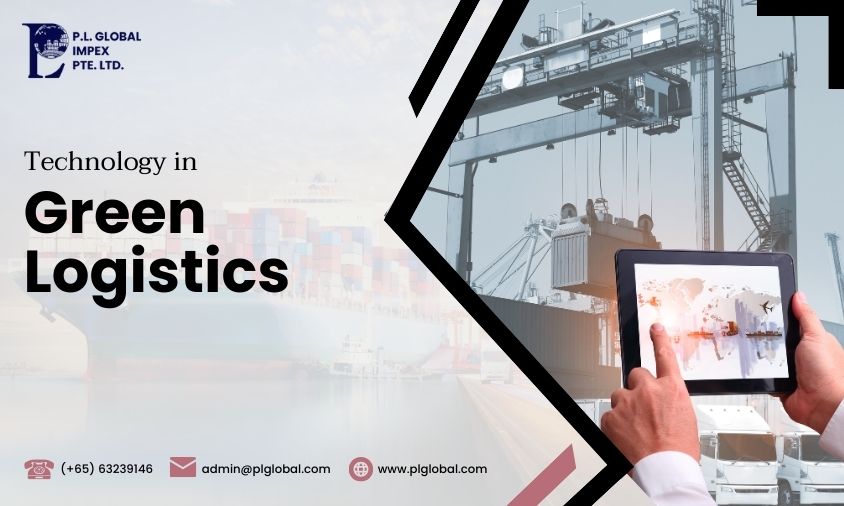
The Role of Technology in Sustainable Supply Chain
Implementing Logistics Software for Efficiency:
Logistics software streamlines operations and boosts efficiency in green logistics. These tools provide real-time visibility into supply chain activities, enabling businesses to make data-driven decisions that reduce fuel consumption and cut down on unnecessary emissions. Implementing logistics software not only enhances operational efficiency but also supports the overall goal of minimizing environmental impact.
Using IoT and Data Analytics to Minimize Waste:
IoT devices and data analytics play a critical role in minimizing waste in green logistics. IoT devices gather real-time data from various points in the supply chain, such as temperature and location sensors on shipments. Data analytics then processes this information to pinpoint inefficiencies, forecast maintenance needs, and optimize resource usage. Companies leveraging these technologies can reduce waste, prevent spoilage, and enhance the sustainability of their operations.
Applying Blockchain for Transparent and Sustainable Supply Chains:
Blockchain technology boosts transparency and sustainability in supply chains. This technology provides all stakeholders with access to accurate, up-to-date information about the origin, handling, and movement of goods. Companies can use blockchain to create a secure and immutable ledger that records every transaction in the supply chain.
Collaborations and Partnerships
Working with Sustainable Suppliers:
Collaborating with sustainable suppliers is crucial for enhancing green logistics. Companies can seek suppliers who adhere to eco-friendly practices and share their commitment to sustainability. This partnership ensures that the materials and products sourced align with environmental goals, reducing the overall carbon footprint of the supply chain.
Building Partnerships for Green Initiatives:
Organizations can build partnerships with NGOs, government agencies, and other businesses to develop and implement environmental projects, such as emission reduction programs and green technology innovations. These collaborations allow companies to pool resources, share expertise, and achieve more significant outcomes in their sustainability efforts.
Case Studies of Successful Collaborations in Green Logistics:
Walmart and its Sustainable Supply Chain Initiatives: Walmart has been a pioneer in integrating sustainability into its supply chain. The company partnered with various suppliers and logistics providers to implement a comprehensive green logistics strategy. Walmart’s “Sustainability Index” helps assess suppliers on their environmental impact and encourages them to adopt sustainable practices. Through these efforts, Walmart aims to achieve zero waste in its global operations and significantly cut greenhouse gas emissions.
Unilever and its Green Logistics Partnerships: Unilever, a global consumer goods company, has made significant strides in green logistics through partnerships focused on reducing environmental impact. Unilever collaborates with logistics providers to implement low-emission transportation solutions and optimize supply chain operations. Unilever has also engaged in partnerships to improve packaging sustainability and reduce plastic waste.
Tesla and its Sustainable Battery Supply Chain: Tesla, a leader in electric vehicles, has worked closely with suppliers to ensure that its battery production is sustainable. The company partners with suppliers to source materials like lithium and cobalt responsibly and to reduce the environmental impact of mining operations. Tesla also invests in innovative technologies for battery recycling and reuse, aiming to minimize waste and extend the lifecycle of battery components.
What are the challenges of adopting green logistics?
Common Obstacles in Adopting Green Logistics:
High Initial Costs: One major challenge is the substantial upfront investment required for green technologies and infrastructure. Implementing energy-efficient systems, sustainable packaging, or low-emission vehicles often involves higher costs compared to conventional methods.
Resistance to Change: Organizational resistance can hinder the adoption of green logistics. Employees and stakeholders may be reluctant to embrace new practices due to a lack of understanding or perceived disruption to established workflows.
Regulatory and Compliance Issues: Navigating the regulatory landscape can be challenging, as different regions may have varying environmental standards and compliance requirements. Staying updated with regulations and ensuring compliance can be resource-intensive.
Strategies to Overcome These Challenges:
Invest in Long-Term Planning: To address high initial costs, companies should focus on long-term financial planning and consider the return on investment (ROI) that green logistics can offer. Analyzing the potential for reduced operational costs and improved brand value can help justify the upfront expenses.
Promote Education and Training: Overcome resistance to change by investing in education and training programs. Providing employees with knowledge about the benefits of green logistics and how to implement new practices can foster acceptance and enthusiasm for the transition.
Stay Informed and Adapt: To navigate regulatory and compliance issues, companies should stay informed about evolving environmental regulations and standards. Engaging with industry associations and legal experts can help ensure compliance and adapt to new requirements.
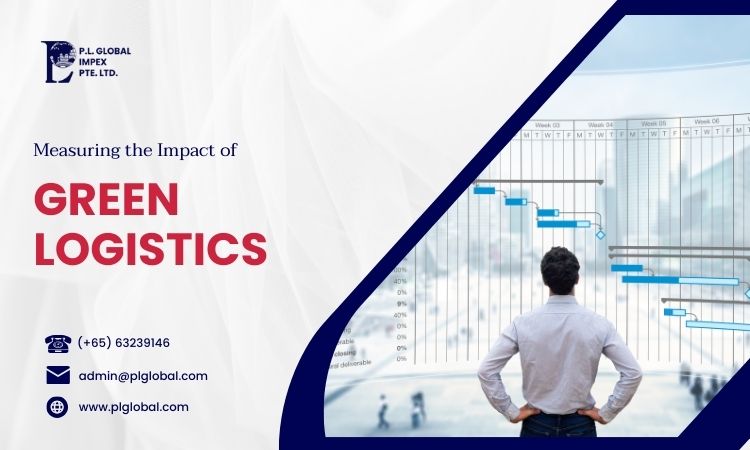
Measuring the Impact of Green Logistics
Key Performance Indicators (KPIs) for Sustainability:
Carbon Footprint Reduction:
Measuring the carbon footprint reduction involves calculating the total greenhouse gas emissions produced by logistics operations. This includes emissions from transportation, warehouse, and packaging processes. By tracking this KPI, organizations can assess the effectiveness of their sustainability efforts, such as adopting cleaner fuels or improving energy efficiency.
Energy Consumption:
Energy consumption metrics track the amount of energy used across logistics operations, including electricity for warehouse operations and fuel for transportation. Monitoring energy use helps identify inefficiencies and opportunities for improvements, such as implementing energy-saving technologies or optimizing energy-intensive processes.
Transportation Efficiency:
Transportation efficiency metrics assess factors such as fuel efficiency, vehicle load optimization, and emissions per mile. Improving transportation efficiency involves adopting strategies like route optimization, utilizing fuel-efficient vehicles, and maximizing vehicle load capacity. This KPI helps organizations reduce operational costs, lower emissions, and enhance overall logistics performance.
Tools for Tracking Environmental Impact:
Environmental Management Systems (EMS):
Environmental Management Systems (EMS) software helps organizations systematically manage and improve their environmental performance. These systems provide tools for tracking, reporting, and analyzing environmental data, such as energy use, waste generation, and emissions. These tools facilitate effective environmental management and support sustainable business practices.
Energy Management Software:
Energy management software tracks and analyzes energy consumption patterns in logistics operations. These tools help organizations identify opportunities for energy savings, optimize energy use, and improve overall energy efficiency. Examples include Energy Star Portfolio Manager, Schneider Electric’s EcoStruxure, and Siemens Building Technologies. These tools are vital for managing energy resources and reducing the environmental impact of logistics operations.
Sustainability Reporting Platforms:
Sustainability reporting platforms compile and report on sustainability metrics, including KPIs related to green logistics. These platforms provide dashboards and analytical tools for evaluating environmental impact and tracking progress toward sustainability goals. By using sustainability reporting platforms, companies can communicate their environmental performance to stakeholders, identify areas for improvement, and enhance transparency.
What are some examples of successful green logistics initiatives?
1. Amazon’s Investment in Electric Delivery Vehicles:
Amazon has committed to reducing its carbon footprint through a significant investment in electric delivery vehicles. Partnering with Rivian, an electric vehicle manufacturer, Amazon plans to deploy 100,000 electric vans by 2030. This initiative aims to reduce the emissions associated with last-mile delivery and aligns with Amazon’s broader sustainability goals. The electric fleet will help minimize greenhouse gas emissions and lower the overall environmental impact of Amazon’s extensive logistics network.
2. Walmart’s Zero-Waste Policies:
Walmart has implemented ambitious zero-waste policies in its logistics operations. The company aims to divert 90% of its waste from landfills and incineration by improving recycling and composting practices. Walmart’s waste reduction efforts include optimizing packaging, enhancing recycling programs, and investing in waste-to-energy technologies. These initiatives not only reduce landfill waste but also contribute to more sustainable supply chain operations and resource management.
3. Unilever’s Sustainable Supply Chain Practices:
Unilever, a global consumer goods company, is enrooting sustainability into its logistics operations through a variety of initiatives. The company has adopted energy-efficient technologies in its warehouses and distribution centers, such as LED lighting and advanced HVAC systems. Unilever also focuses on optimizing transportation routes to reduce fuel consumption and emissions.
The Bottom Line
Green logistics plays a pivotal role in developing sustainable supply chains by focusing on reducing environmental impact through various eco-friendly practices. Embracing sustainable transportation methods, such as fuel-efficient and electric vehicles, helps cut emissions and lowers carbon footprints. Implementing sustainable practices also extends to packaging, where eco-friendly solutions like biodegradable and recyclable materials minimize waste and resource use. By integrating these strategies, businesses not only enhance operational efficiency but also bolster their brand reputation and contribute to a cleaner environment.
